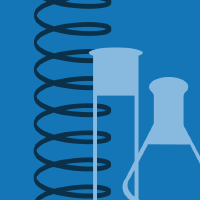Topic Editors


Discovery of Bioactive Compounds from Natural Organisms and Their Molecular Mechanisms against Diseases
Topic Information
Dear Colleagues,
Drugs play a pivotal role in improving people’s health and quality of life and, subsequently, in the development of society. Currently, however, the development of synthetic drugs is becoming increasingly more difficult because of development costs, cycle prolongation, a sharp decline in success rates, and increasingly more serious environmental pollution. Therefore, the search for lead compounds to develop novel drugs is regarded as a lifeline by major pharmaceutical companies. Many secondary metabolites with novel different structures have been synthesized in organisms during their long evolutionary process. The chemical difference in these organisms allows not only various bioactivities but also the development of a de novo mechanism. They are thus an indispensable source for new drug research and development in efforts to discover novel lead compounds from the millions of plants, animals, microorganisms, and marine organisms that exist in nature. The main goal of this Topic is to publish novel compounds with excellent bioactivities from plants and microorganisms. Compounds from animals or marine organisms are also welcomed. We hope this Topic will provide readers with a selection of papers that represent the current state of knowledge on the discovery of novel compounds.
Dr. Jun Dang
Dr. Tengfei Ji
Dr. Xinxin Zhang
Topic Editors
Keywords
- novel compounds from terrestrial and marine plants and animals
- novel compounds from microorganisms such as fungal fermentation
- isolation with chromatographic methods and structure elucidation with spectral characterization
- pharmacological evaluation of compounds of natural origin
- molecular mechanisms of compounds against diseases including '-omics' and bioinformatics/computational biology approaches
Participating Journals
| Journal Name | Impact Factor | CiteScore | Launched Year | First Decision (median) | APC | |
|---|---|---|---|---|---|---|

Analytica
|
- | - | 2020 | 15.6 Days | CHF 1000 | Submit |

Antioxidants
|
7.0 | 8.8 | 2012 | 13.9 Days | CHF 2900 | Submit |

Biomedicines
|
4.7 | 3.7 | 2013 | 15.4 Days | CHF 2600 | Submit |

Nutrients
|
5.9 | 9.0 | 2009 | 14.5 Days | CHF 2900 | Submit |

Separations
|
2.6 | 2.5 | 2014 | 13.6 Days | CHF 2600 | Submit |

MDPI Topics is cooperating with Preprints.org and has built a direct connection between MDPI journals and Preprints.org. Authors are encouraged to enjoy the benefits by posting a preprint at Preprints.org prior to publication:
- Immediately share your ideas ahead of publication and establish your research priority;
- Protect your idea from being stolen with this time-stamped preprint article;
- Enhance the exposure and impact of your research;
- Receive feedback from your peers in advance;
- Have it indexed in Web of Science (Preprint Citation Index), Google Scholar, Crossref, SHARE, PrePubMed, Scilit and Europe PMC.


